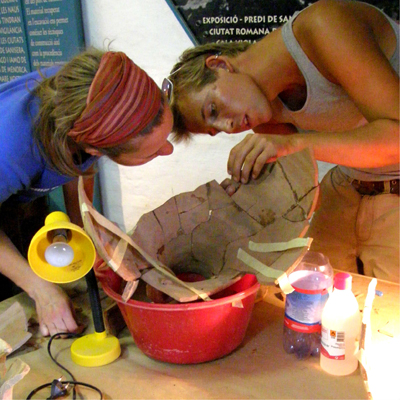Ghent University
Job Vacancy
(See <http://www.ugent.be/nl/nieuwsagenda/vacatures/aap/>)
Academic assisting staff
We are looking for a full-time post-doctoral assistant for the Faculty of Arts and Philosophy within the department of Archaeology (LW02).
About Ghent University
Ghent University is a world of its own. Employing more than 7,000 people, it is actively involved in education and research, management and administration, and technical and social services on a daily basis. It is one of the largest, most exciting employers in the area and offers great career opportunities. With each of its 11 faculties and more than 100 departments offering state-of-the-art study programmes that are grounded in research in a wide range of academic fields, Ghent University is a logical choice for its employees as well as its students.
What we are looking for:
* A doctoral degree in archaeology or a degree recognized as an equivalent. (The degree requirements need to be fulfilled at the start of your appointment);
* Thorough knowledge of the Bronze and Iron Ages in the Near East with a focus on Mesopotamia, Iran or Syro-Mesopotamia and Levant/Cyprus, for example evidenced by the doctoral research;
* Experience in research within the field of the Bronze and Iron Age of the Near East, backed up by publications in international scientific journals with an International Review Committee and/or contributions in books, as well as participation in scientific conferences by giving lectures;
* Extensive field experience on sites with Bronze and Iron Age material in the region concerned;
* Highly motivated candidates who can function perfectly within a team;
* Flexibility and mobility;
* Competence in the organization of scientific workshops and conferences.
Your tasks
* Scientific research at a high level on a research topic concerning the Bronze and Iron Age in the Near East;
* The candidate should scientifically and administratively assist the field work of the research group in the Ancient Near East, and for this purpose participate in archaeological missions ca. 4 to 6 weeks per year;
* You will assist in teaching activities at the Bachelor’s or Master’s level of the Ancient Near East;
* You will provide support to the services and expertise offered by the department.
What we can offer you
* We offer you a three-year appointment. The appointment cannot be renewed.
Attention: If you have been previously appointed as a post-doctoral assistant at a university within the Flemish Community, you cannot apply for this position.
* Your appointment starts September 1st 2015 at the earliest.
* Your remuneration will be determined according to salary scale AAP5. More information about this can be found on our website.
* All Ghent University staff members enjoy a number of benefits, such as 38 days of paid leave, a wide range of training and education opportunities, bicycle commuting reimbursement, ecocheques, etc. A complete overview of all our fringe benefits can be found on our website.
Interested?
Your application must be received no later than 15/06/2015 at 23:59 (CET) at wervingaap@ugent.be, with the following documents attached as one file:
* Application letter
* CV
* A transcript of the required degree
* A text (of max. 1500 words) with your vision on the job, including a concrete research and publication plan
* An overview of your relevant scientific publications
Please clearly indicate the position and department you are applying for, as well as the following reference number: 2015-05-12. You will get a confirmation e-mail as soon as we have received your application.
Attention: Late applications are not accepted.
As Ghent University maintains an equal opportunities and diversity policy, everyone is encouraged to apply for this position.
More information
For more information about this vacancy, please contact Prof. Frank Vermeulen (Frank.Vermeulen@UGent.be, 09/331.01.68).






